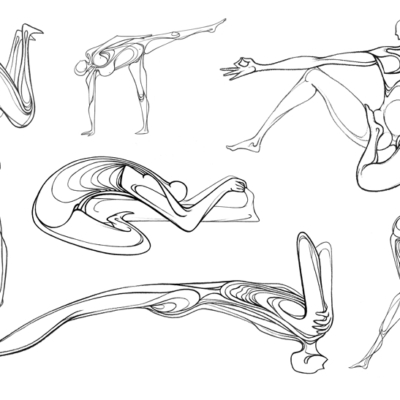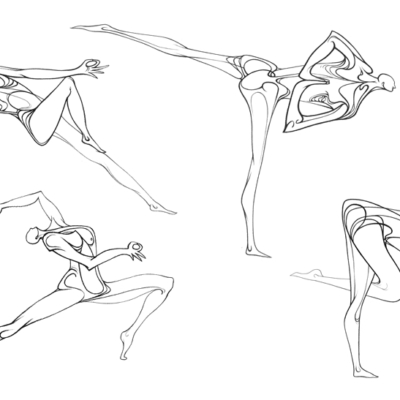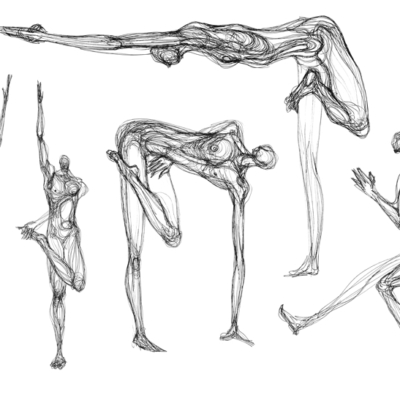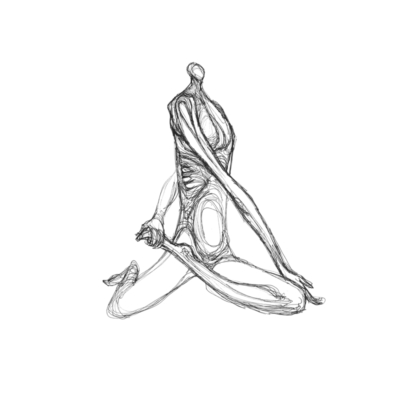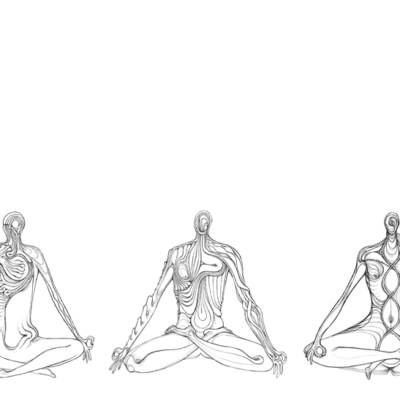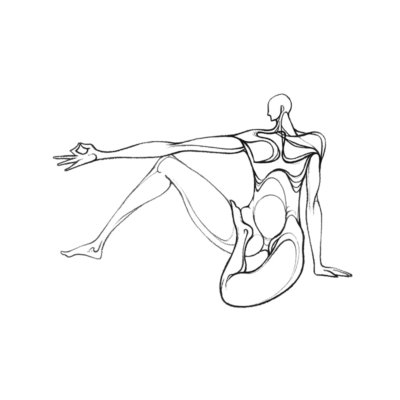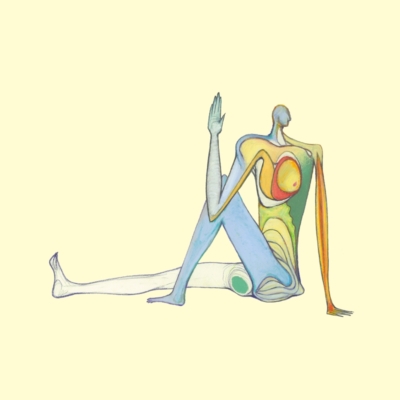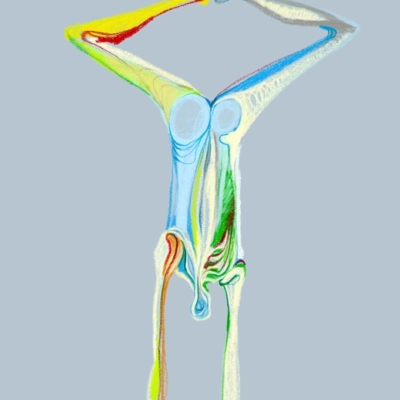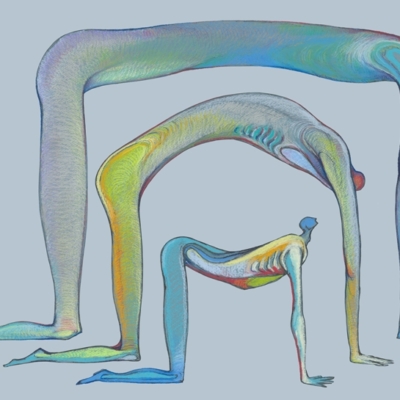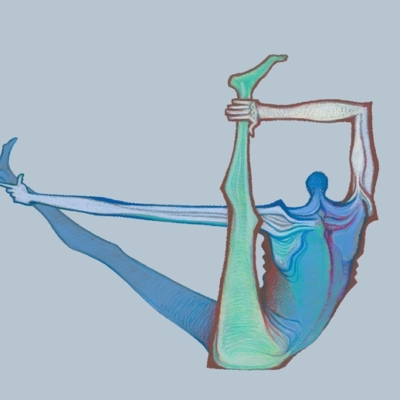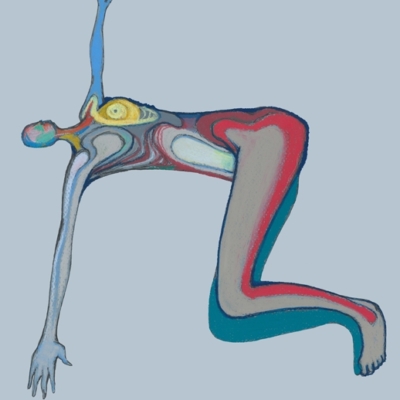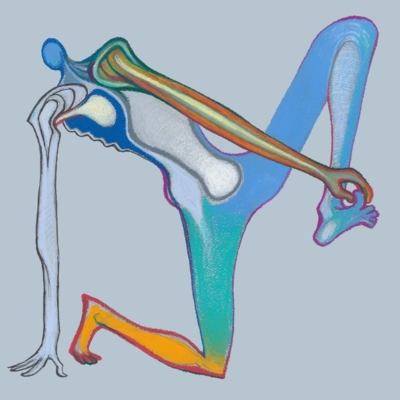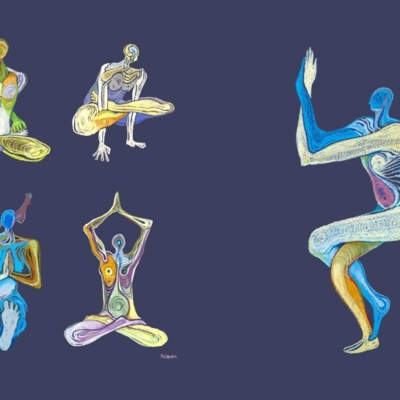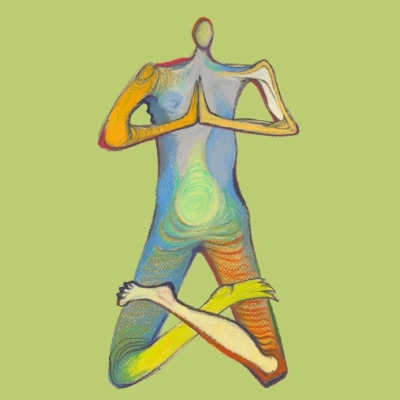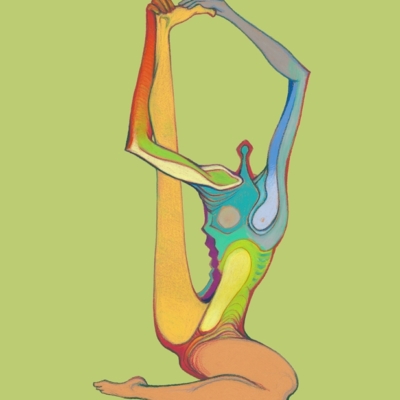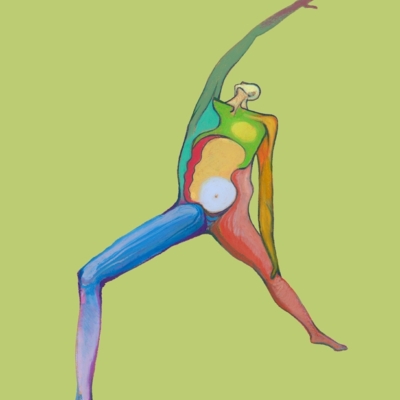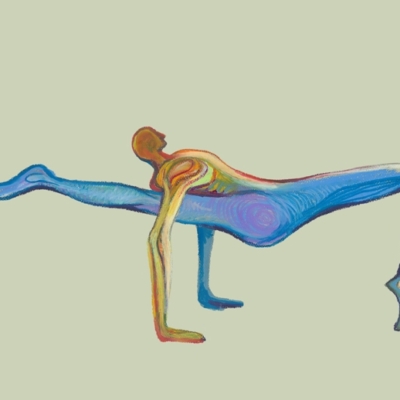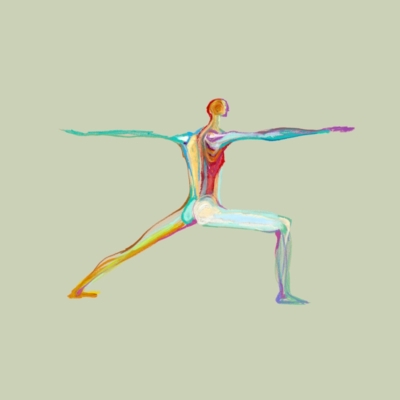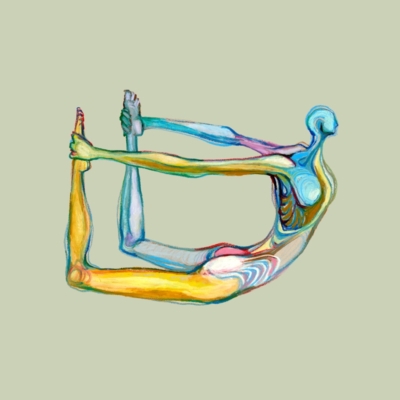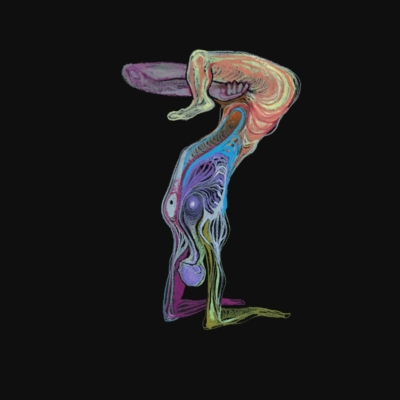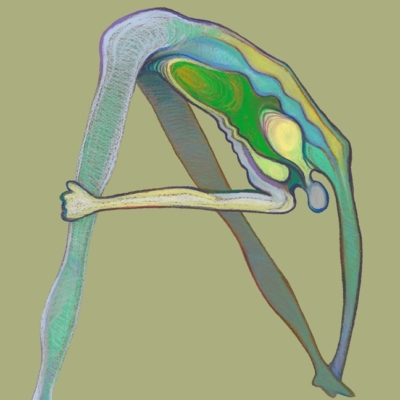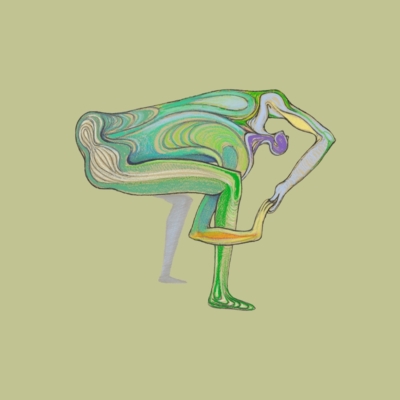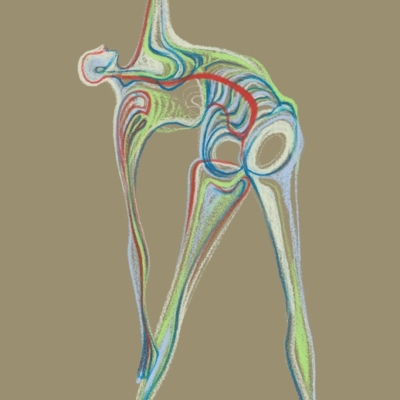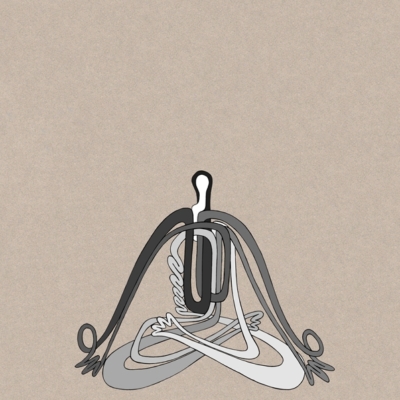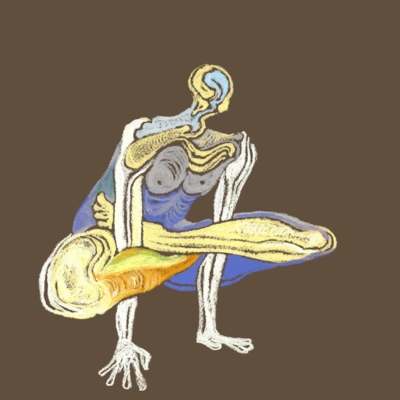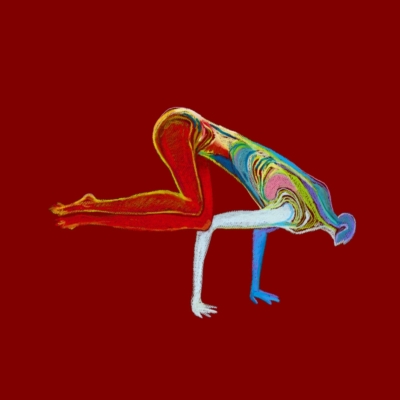Graphikasana
The Practice of Yoga in the Work of Yolyanko William
The generous amounts of asanas that Yolyanko William has rendered in these series of drawings demonstrates that symbolically speaking, the physical body can be lost in an immense sea of visual energy. This imagery of voluptuous lines and simplified figural sketches, go beyond the mere intention to give a didactic account of the practice of yoga. It only takes a few glimpses of these images to perceive the innumerable amount of physical and psychological benefits that these yoga postures offer. In the words of the ancient Yogi Pantajali, “The word asana is defined as a firm posture of the body which shows relaxation at the same time”. In this group of practical and mystical graphics, the serene quality that allows the body to be prepared for meditation is perceived in the confident and gestural line of the artist.
Yolyanko William chooses the symbolic lotus flower pose as the starting point of his body of work. From the start, the figure assuming this pose and others subsequent ones have no specific gender. Just as the soul is an ethereal entity in the realm of mystic beliefs, the figures represented by William embody a stylized anatomy associated more with incorporeal beings than with the physical body. The image of the lotus flower evolves taking other embodiments in different stages where the figure seems to adhere to a subtle mysticism. A strong gestural figure grows out of its visual matter to become more stylized. In his drawings, the essence of physical liberation, which the practice of yoga aspires to achieve, is manifested in the abstraction of the figure.
These images reflect the artist’s visual and transcendental search. The artist intuition is charged with beliefs and concepts that the practice of yoga offers a transformative process. From the moment he chooses this particular subject matter, he also chooses to face the evasive quality of the learning involved in growing with his art and in becoming stronger and more confident. As he grows in this personal practice, the images become emancipated from the formalities and the symbolism that he discovers in the process.
The result of this search is seen in many of the figures presented in a meditative immobility vulnerable to physical and spiritual growth. There is physical evolution as well, which is manifested within images that denote lines with visceral characteristics such as tendons, veins, ligaments that are intertwined or stretched out revealing part of the strenuous side of the yoga practice. Highlighting these anatomical elements confirm the necessary presence of a sturdy yoga posture to liberate the body from the psychological ties which it is subjected to. As the figure becomes more stylized, the complexity of line turns more intrinsic and an ethereal being emerges.
The being represented in the foundation phase or warrior poses, maintains the fundamental vitality of the physical body as well as the strength necessary for the practice of yoga. Here the artist uses a more neuralgic line. William’s warriors are striving to reach the light that represents the essential qualities such as courage, strength, flexibility and the ability to remove the obstacles on the way towards achieving a higher self.
In the subsequent drawings, the figure goes through a visual metamorphosis as an allegory to the different stages that the practice of yoga aspires. The application of subtle and intuitive lines keep building sequential dynamics such as the sun salutations and the balancing poses. It is a visual challenge as well as a philosophical one to maintain a balanced pattern in the way the poses move along the pages. And it is with the inventiveness of the sensibility of an artist that his hand fulfills the ultimately intention which is to transmit the divine beauty of the union between the mind and the soul of yoga and art.
Rosanna Montoya (Lima-Peru)
Writer, artist and hatha yoga instructor

